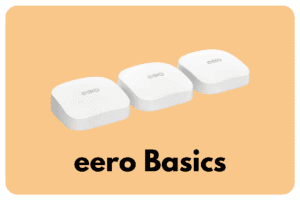How to Use a Washing Machine: 5 EASY Tips!
We’re reader-supported; we may earn a commission from links in this article.
Laundry may not be your favorite chore, but washing your clothes and bedding is essential for maintaining cleanliness and hygiene.
If you’re one of the many people who find operating a washing machine intimidating or confusing, don’t worry.
In this article, we’ll provide a step-by-step guide on how to use a washing machine, including tips and tricks to ensure your clothes come out clean and fresh every time.
How to Use a Washing Machine?
To use a washing machine, sort laundry by color and type, load it into the machine without overfilling, and add detergent per instructions. Choose an appropriate wash cycle and water temperature. Start the wash, and remove clothes promptly after the cycle ends to prevent wrinkles and mildew.
Here are some more detailed steps to get you started on using a washing machine:
Step 1: Sorting Your Laundry
Before loading anything into your washing machine, you need to sort your clothes properly.
Separate whites, lights, and darks into separate piles to prevent color bleeding and fabric damage.
Always check the label on your clothes to determine the correct water temperature, cycle, and detergent to use.
Remove any large items, such as sheets or blankets, from your comforter to ensure proper cleaning.
Sorting your laundry is not just about color, it also involves considering fabric types and washing instructions.
Material Sorting
There are certain types of materials that need to be washed separately. Delicate fabrics such as silk and lace are often best washed on their own or in a mesh laundry bag to prevent damage during the wash cycle. Heavy fabrics like denim and towels have a different wash requirement and can cause lighter fabrics to wear out faster.
Cleaning Instructions
Don’t ignore the cleaning instructions that are usually found on the label inside your clothing. These instructions provide critical information about the recommended wash and dry methods for each garment. Items marked ‘dry clean only’ or ‘hand wash only’ should be set aside and not included in your machine wash.
Pre-Treating Stains
Before throwing your clothes into the washer, take some time to pre-treat any visible stains.
Stain-removal products or a simple mixture of water and dish soap can be applied to the stain prior to washing. This will greatly improve the chances of the stain being removed during the wash cycle.
Remember, the more time and effort you put into sorting your laundry properly, the longer your clothes will last and the better they’ll look.
Step 2: Load Your Clothes
Once you’ve sorted your clothes, it’s time to load them into the washing machine.
Don’t overload the machine, as this can cause the machine to vibrate excessively and reduce the effectiveness of the wash.
When adding detergent, measure the exact amount according to the label and pour it into the detergent compartment.
Remember, more detergent doesn’t mean cleaner clothes; it can even damage your fabrics.
When loading clothes into the washing machine, distribute them evenly around the agitator (the large spindle found commonly in the center of the drum of older washing machine models) or the drum (for front loading machines or top loaders without agitators).
This even distribution prevents the washing machine from becoming unbalanced, which can result in excessive noise, vibration, and potential wear and tear on the machine.
Be sure not to pack clothes too tightly. Clothes need room to move freely for the detergent to interact with the water and penetrate fabrics fully.
Too much laundry can compress and restrict the movement of the clothing, leading to less effective washing.
When it comes to delicate items or garments with loose strings and straps, it’s best to put them into mesh laundry bags to prevent tangling and damage.
Fasten all zippers, hooks, and buttons to prevent them from snagging or tearing other items during the wash cycle.
Loading your clothes properly into your washing machine not only helps your clothes get clean but also extends your lifespan.
Once you’ve added your clothes, it’s time to add your detergent, fabric softener, or bleach if necessary.
Step 3: Add Detergent
Remember to use the right amount of detergent. Excessive detergent can leave residue on your clothes and cause problems with your machine over time.
Use the measuring cap that comes with your detergent bottle to ensure you’re using the correct amount.
Determining the Amount of Detergent
The amount of detergent you should use depends on several factors: the size of the load, the type of your washing machine, the level of soil in your clothes, and the hardness of your water.
- Size of the Load: A full load of dirty clothes typically requires a full cup of detergent, whereas a partial load requires less. Use your judgment based on how full your machine is.
- Washing Machine Type: High-efficiency (HE) washing machines use less water than traditional machines and require less detergent. If you’re using an HE machine, use an HE detergent and follow the instructions for the recommended amount.
- Soil Level: Heavily soiled clothes will need more detergent to clean effectively. If your clothes are only lightly soiled and not stained, you can use less detergent.
- Water Hardness: Hard water contains minerals that can interfere with the efficiency of your detergent. If you have hard water, you might need to use a little more detergent than the recommended amount.
| Amount of Clothes | Detergent Needed |
|---|---|
| Small Load (like a few shirts and socks) | 1-2 teaspoons |
| Medium Load (like a week’s worth of work clothes) | 2-3 teaspoons |
| Large Load (like your entire wardrobe overhaul) | 3-4 teaspoons |
Use the lines or marks on your detergent cap or scoop to measure the right amount of detergent.
If there are no marks, a good rule of thumb is to fill the cap or scoop to just under halfway for a medium load.
Remember that using too much detergent can create excess suds, which may hinder the cleaning process, leave a residue on your clothes, and potentially damage your machine over time.
Always aim to use just enough detergent to clean your clothes effectively.
Step 4: Choosing the Right Cycle
There are several cycles to choose from when running a washing machine. Each cycle is designed for different fabric types and levels of dirt.
If you’re unsure about which cycle to use, always refer to the clothing label for guidance.
Choose a delicate cycle for fragile fabrics like silk or lace, a normal cycle for cotton or synthetic materials, and a heavy-duty cycle for heavily soiled items like work clothes or bed linen.
Step 5: Running the Machine
Once everything is loaded and the cycle has been selected, it’s time to turn on the machine. If it’s a top-loading machine, close the lid and press start.
If it’s a front-loading machine, close the door securely before starting it.
The machine will automatically start and continue to run until the cycle is complete.
Always read the manual to understand how to adjust settings, pause the machine or add more detergent if necessary.
Step 6: Drying Your Clothes
Once your cycle is complete, it’s time to dry your clothes. Remove clothes from the washing machine immediately, place them in the dryer, or hang them on a clothesline.
Be sure to check the label for special instructions on how to dry or iron specific fabrics.
Always wait for clothes to dry, as wet clothes can produce an unpleasant odor and damage your clothes.
Step 7: Unloading the Dryer
Once the dryer has completed its cycle, promptly remove the clothes to prevent them from becoming excessively wrinkled. Shake out each garment to help eliminate wrinkles and facilitate better air circulation for those items you plan to air dry further. Check the interior of the dryer for any items that may have been stuck to the drum.
Step 8: Folding and Storing Your Clothes
After your clothes are completely dry, fold them neatly to reduce wrinkles and save space when storing them. Clothes made from delicate fabrics or dress clothes may need to be hung up to maintain their shape.
Make sure to store your folded clothes in a clean, dry place to prevent them from accumulating dust or moisture.
This step helps maintain the quality and longevity of your clothes and keeps them looking nice and neat when you’re ready to wear them.
Step 9: Cleaning your Washing Machine
Finally, clean your washing machine regularly to remove detergent residue and any other buildup which can affect your machine’s performance over time.
Wipe down the exterior with a damp cloth and mild detergent, and run a cycle with just hot water and a cup of white vinegar to clean the interior.
Remember, a clean and well-maintained machine is key to ensuring that your laundry is done effectively and your clothes are well cared for.
Conclusion
We hope this ultimate guide to using a washing machine will make your laundry routine less daunting.
With these helpful tips, you can enjoy clean and fresh clothes every time you do laundry.
Remember, always read the label and use the correct cycle and amount of detergent to achieve the best results.
Soon, you will be an expert at using your washing machine, and your clothes will thank you!

Justin Chia
Justin is the author of Justjooz and is a data analyst and AI expert. He is also a Nanyang Technological University (NTU) alumni, majoring in Biological Sciences.
He regularly posts AI and analytics content on LinkedIn, and writes a weekly newsletter, The Juicer, on AI, analytics, tech, and personal development.
To unwind, Justin enjoys gaming and reading.






